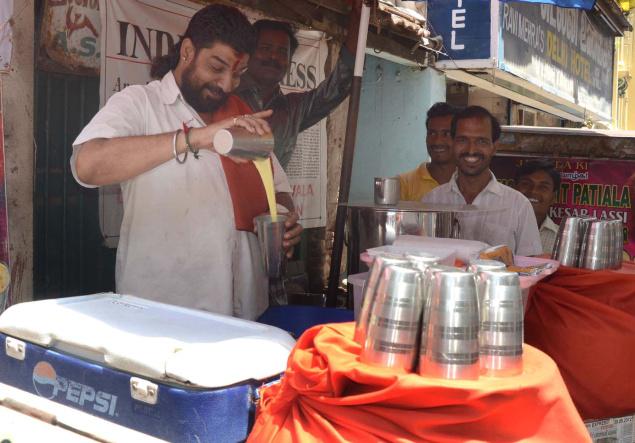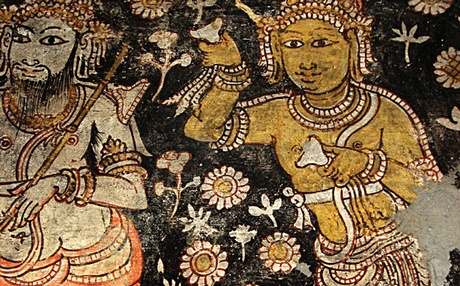
His rugged physique has earned Dinesh Soni the moniker ‘Sowcarpet don’. But the former wrestler spreads sweetness through his lassi shop, says Vipasha Sinha
Everybody in Sowcarpet seems to know Dinesh Soni. He acknowledges everyone as he arrives at his shop on 343 Mint Street – Anmol Mohit Lassi.
A food stall owner introduces him jokingly as ‘Sowcarpet’s Don.’ As he has a daunting physique, rugged looks and rides a massive bike, I almost believed it. It’s his punch dialogue that breaks the awkward silence. He says, “Jab jab garmi ne mara hai, Anmol Mohit chaanch aur lassi ne sanwara hai (whenever the heat kills, Anmol Mahit buttermilk and lassi comes to the rescue).”
“I am a wrestler-turned-lassi walla,” he explains his rugged look.
He has named his shop after his son Mohit and his friend’s daughter Anmol, whom he treats like his own. Dinesh was born in Chennai but moved to Rajasthan for a few years, where he fought as a professional wrester. “After a point, my body gave up and my career came to an end. I had to support my family. I came back to Chennai and started this business. I have been selling my speciality, kesar lassi, for the past 21 years,” says Dinesh, who hails from a family of goldsmiths.
The reason he chose to venture into this business was to give the city, which is known for its hot summer, a taste of cool Indian drink. “My lassi is different from the ones that usually sell here. This is the reason why I have all kinds of customers come here regularly. Also, a wholesome glass of lassi provides my customers with the energy to keep them going through the day,” he says.
Apart from lassi, he also sells Mohit shampoo and hair oil, which he claims can cure all problems. But lassi will always be his first love. He hopes his son Mohit will join the business after he finishes engineering. “Ask anyone about Anmol Mohit lassi, and he will show the way to my shop. This is the brand I have built for years.”
source: http://www.thehindu.com / The Hindu / Home> News> Cities> Chennai> Down Town / by Vipasha Sinha / Chennai – August 24th, 2013







